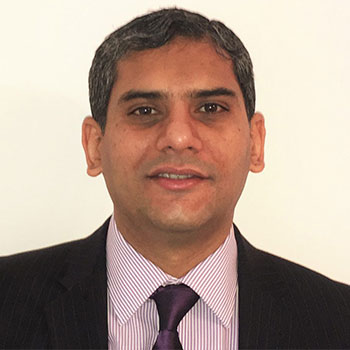What are the nasal turbinates?
Nasal turbinates are long, thin, curved bones that project into the nasal passages. They are an essential part of the nasal cavity, playing a crucial role in humidifying and filtering the air we breathe. There are three pairs of nasal turbinates: superior, middle, and inferior. The inferior turbinates are the largest and usually the focus of turbinate reduction surgery. These structures help to warm and moisten the air before it reaches the lungs, ensuring that the air we breathe is clean and at the right temperature. When the inferior turbinates become swollen or enlarged, they can obstruct airflow, leading to chronic nasal congestion and difficulty breathing.
Causes and diagnosis of enlarged inferior turbinates
Various factors, including allergies, colds, sinus infections, and anatomical abnormalities, can cause the inferior turbinates to become enlarged. When these turbinates become swollen, they can block the nasal passages, making it difficult to breathe.
Diagnosis typically involves a physical examination, nasal endoscopy, and imaging tests – most commonly a CT scan. During a nasal endoscopy, a healthcare provider uses a thin, flexible tube with a camera to view the inside of the nasal cavity and assess the size and shape of the turbinates. This comprehensive evaluation helps determine the underlying cause of the turbinate enlargement and guides the development of an appropriate treatment plan.
Candidates for turbinate reduction
Candidates for turbinate reduction surgery typically experience chronic nasal congestion, difficulty breathing, and persistent sinus issues. These individuals may have tried conservative treatments such as nasal sprays, antihistamines, and decongestants without finding relief. A consultant ENT surgeon will evaluate your symptoms, medical history, and nasal anatomy to determine if turbinate reduction surgery is necessary.
Alternatives to surgery
Alternatives to turbinate reduction surgery include conservative treatments such as nasal sprays, antihistamines, and decongestants. These treatments can help alleviate symptoms, but they may not provide long-term relief for everyone. Other alternatives include nasal strips, which can help open the nasal passages, humidifiers to add moisture to the air, and saline nasal irrigation to clear out mucus and allergens. In some cases, an ENT consultant may recommend a trial of nasal steroids or immunotherapy to manage symptoms before considering surgery. These non-surgical options can be effective for some patients, but for those with persistent symptoms, turbinate reduction surgery may be the best solution.
Please call to enquire about the price
Ways to payBefore surgery
Initial consultation
During the initial consultation, the surgeon will evaluate your symptoms and medical history and perform a thorough examination of the nasal cavity. This assessment often includes nasal endoscopy to visualise the turbinates and identify any contributing factors, such as a deviated septum or the presence of scar tissue. The consultant may also discuss your previous medical treatments and any other procedures that may be necessary to comprehensively address the nasal airway obstruction. This consultation is essential for determining the most appropriate turbinate reduction procedure tailored to your specific needs.
Preparing for surgery
Preparation for turbinate reduction surgery typically involves several steps to ensure patient safety and optimise outcomes. You may be advised to avoid certain medications that increase the risk of bleeding, such as blood thinners, before the procedure. The surgeon will discuss anaesthesia options, which can include local anaesthesia for less invasive procedures or general anaesthesia for more extensive surgeries. You will also be instructed on preoperative fasting guidelines if general anaesthesia is planned. Additionally, the surgeon will explain the risks associated with surgery, such as bleeding, infection, and potential complications. One of them is empty nose syndrome (ENS), a rare condition where patients may feel obstructed despite having open nasal passages. Clear instructions regarding the day of surgery, including arrival time and post-operative care, will help you feel prepared and reduce anxiety.
During surgery
Radiofrequency turbinate reduction uses radiofrequency energy to shrink the turbinate tissue, providing a less invasive option with a shorter recovery time. Radiofrequency reduction is an effective treatment for improving nasal obstruction caused by enlarged turbinates, without requiring the removal of bone or tissue.
Turbinate resection involves removing part or all of the turbinate bone and tissue, which can be more invasive but may be necessary for severe cases. Some surgical techniques involve removing only a portion of the turbinate to balance the risks and benefits.
The choice of surgery depends on your symptoms, nasal anatomy, and medical history. More invasive procedures are typically performed under general anaesthesia to ensure you remain unconscious and pain-free during surgery.
These surgeries are usually performed in an operating room to maintain a sterile environment and ensure patient safety and effectiveness.
After surgery
Immediate post-surgery care
Immediate post-surgery care involves monitoring for any signs of complications and ensuring your comfort and well-being. Crusting may develop due to nasal discharge as the tissues heal, potentially lasting up to three weeks. You may experience some discomfort and should follow your consultant’s instructions for pain management. Pain is typically manageable with simple painkillers, but it is essential to monitor pain levels to address any significant discomfort promptly. Swelling is also common and should be managed according to the healthcare provider’s recommendations to prevent excessive swelling. Applying antibiotic ointment during recovery can help manage side effects such as crusting and dryness in the nasal area, promoting healing and preventing complications.
Long-term recovery
Long-term recovery following turbinate reduction surgery involves several essential steps to ensure optimal healing and sustained improvement in nasal airflow. After the initial healing phase of one to two weeks, you may continue to experience mild swelling and nasal congestion, which gradually diminish over time. It is essential to maintain good nasal hygiene during this period, including gentle saline nasal irrigation, to keep the nasal passages moist and clear of crusts or debris.
You should avoid strenuous activities and heavy lifting for at least two weeks post-surgery to prevent bleeding and swelling. Smoking and exposure to irritants, such as dust or strong chemicals, should also be minimised to support tissue healing and reduce inflammation.
Follow-up visits with the surgeon are crucial for monitoring the progress of healing, assessing the reduction in turbinate size, and identifying any complications early. In some cases, additional procedures or treatments might be recommended if symptoms persist or if there is incomplete relief of nasal obstruction.
The long-term success of turbinate reduction surgery depends not only on the surgical technique but also on addressing any underlying causes of turbinate enlargement, such as allergies or chronic sinusitis. You may benefit from ongoing medical management, including nasal sprays or allergy treatments, to prevent the recurrence of turbinate swelling.
Overall, with proper care and adherence to post-operative instructions, most patients experience significant and lasting improvements in breathing, nasal airflow, and quality of life following turbinate reduction surgery.
Appointment and Treatment Plan
Initial Consultation
The surgeon reviews your symptoms, examines your nasal cavity (often using endoscopy), and discusses your medical history and potential contributing factors.
Treatment Planning
Based on your condition, the surgeon will recommend the most suitable type of turbinate reduction and explain possible risks, including rare complications like empty nose syndrome.
Pre-operative Preparation
You’ll receive instructions on fasting, medications to avoid, and anaesthesia options. You’ll also be briefed on what to expect on the day of surgery.
Surgery
The procedure may involve radiofrequency reduction (less invasive) or turbinate resection (more invasive), performed under local or general anaesthesia in a sterile operating room.
Immediate Post-surgery Care
Expect crusting, swelling, and mild discomfort. Use painkillers as advised and apply the prescribed ointment to support healing and reduce dryness.
Long-term Recovery
Swelling and congestion may last a few weeks. Maintain nasal hygiene with saline rinses, avoid strenuous activity, and attend follow-up visits for monitoring.
Ongoing Management
Managing allergies or sinus issues post-surgery helps maintain results. Nasal sprays or medical therapy may be recommended to prevent recurrence.
Experts
We are proud to provide patients with access to a wide range of clinicians, chosen specifically for their knowledge and reputation in their area of expertise. Our experts align with our values: putting you at the centre of your care and educating you on your options at each step of the journey. We encourage you to learn more about our clinicians and how they can help you below. As always, please contact our patient services team if you require any additional information.
We offer 3 ways to pay for your treatment
We exist to take the stress out of private healthcare.
Our payment options are designed to offer you easy access to our treatments and services. You can choose to pay on the day, spread the cost, or use your private medical insurance.
Our patient services team will guide you through the process, providing clear costs and support throughout your course of treatment so you can focus on the thing that matters most – your health.
Whether you pay in advance, spread the cost, or use your private medical insurance, rest assured you will be receiving exceptional care 365 days a year.
Pay in Advance
Even if you do not have medical insurance, you can still get quick and comprehensive access to private medical care.
We provide transparent pricing from your initial consultation to the completion of your treatment so you know where your stand, every step of the way.
We accept all major debit and credit cards, as well as Apple Pay for UK residents. Please note that we do not accept cash or cheques.
Spread the cost monthly
Paying for your treatment at OSD Healthcare can be spread monthly from 12 to 60 months, rather than paying in one go.
With an upfront 10% deposit paid, via our Financial partner Chrysalis Finance, we offer various flexible terms to enable you to spread the cost, including 12-months at 0% APR. Click here to find out more.
Monthly payments need to be linked to an OSD treatment over £385 and is subject to a 14-day ‘cooling-off’ period before any treatment can start.
Your on-going payments will be made directly between Chrysalis and yourself. It’s that simple.
Pay using PMI
We are recognised by all major health insurance companies and with our extensive range of services, there are lots of benefits to using your insurance with us. Our patient services team is here to answer any questions you may have about using your private health insurance with us.
Please bring along your policy details including your scheme details, membership or policy number, expiry date and confirmation of eligibility to claim (i.e. your authorisation number). If you do not have these details with you, we will require payment from you on the day. Patients are liable for any amounts not settled by their insurer.
FAQs
Turbinate reduction surgery is generally associated with minimal discomfort. Most patients report feeling pressure or mild pain during the recovery process, which can be effectively managed with over-the-counter pain relief medications. The procedure itself, primarily when performed using radiofrequency energy, is typically less invasive and causes less pain compared to other surgical methods. The use of local or general anaesthesia during the surgery ensures that patients do not experience discomfort during the procedure itself. After surgery, some swelling and crusting may occur, but these symptoms are a regular part of the healing process and can be managed with proper care and medication.
For individuals suffering from chronic nasal congestion and difficulty breathing due to enlarged turbinates, turbinate reduction surgery can be a highly effective solution. The surgery is worth considering for those who have not found relief through conservative treatments such as nasal sprays or decongestants. By reducing the size of the turbinates, the procedure improves airflow through the nasal passages, enhancing the patient’s quality of life. Many patients report significant improvements in breathing, reduced nasal obstruction, and better sleep quality post-surgery, making it a worthwhile option for those with persistent symptoms.
Turbinate reduction is a surgical procedure designed to decrease the size of the turbinates in the nasal cavity. The turbinates are structures within the nose that can become swollen due to allergies, infections, or anatomical variations, resulting in nasal obstruction and breathing difficulties. The procedure involves either shrinking the turbinate tissue using radiofrequency energy or removing a portion of the turbinate bone and tissue to relieve nasal blockage. Turbinate reduction is designed to improve nasal airflow, reduce congestion, and enhance overall respiratory function.
The healing process after turbinate reduction surgery varies from individual to individual, but most patients can expect a recovery period of approximately one to two weeks. However, complete healing and full benefit may take several weeks to a couple of months. During this time, it is common to experience some nasal congestion, swelling, and crusting as the tissues heal. Patients are typically advised to avoid strenuous activity and follow their consultant’s instructions for post-operative care to ensure a smooth recovery. Complete healing and the full benefits of the surgery, such as improved breathing and reduced congestion, are usually noticeable within a few weeks to a couple of months after the procedure. Regular follow-up appointments with the healthcare provider help monitor the healing process and address any concerns that may arise.
Medically reviewed by Mr Bhavesh Patel - Consultant ENT Surgeon on 13/08/2025



